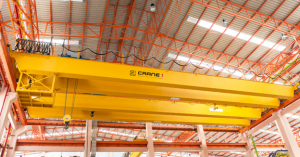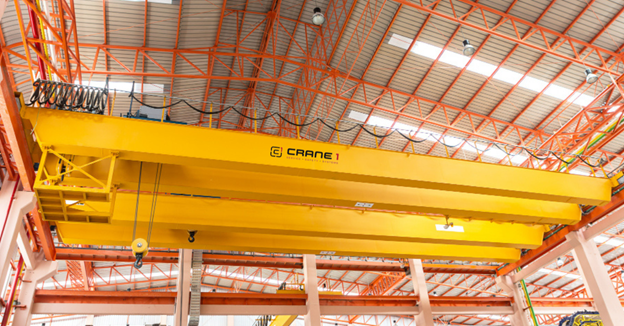For businesses relying on efficient material handling, overhead cranes represent indispensable assets. These powerful machines facilitate the movement of heavy loads across various industrial environments, contributing significantly to productivity and streamlining operations. However, like any complex mechanical system, overhead cranes are susceptible to breakdowns. Unexpected downtime can lead to significant disruptions, project delays, and financial losses. Therefore, understanding the common causes of overhead crane failures and implementing proactive and reactive strategies to address them is crucial for maintaining operational efficiency and minimizing costly interruptions.
This article delves into the top five effective ways to resolve overhead crane breakdowns, providing a comprehensive guide for facility managers, maintenance personnel, and anyone responsible for the upkeep and operation of these vital pieces of equipment. By understanding these strategies, businesses can minimize downtime, enhance safety, and ensure the longevity of their overhead crane investments.

#1. Implement a Robust Preventative Maintenance Program
The most effective way to resolve overhead crane breakdowns is to prevent them from occurring in the first place. A well-structured and consistently executed preventative maintenance program forms the cornerstone of reliable crane operation. This proactive approach involves regularly scheduled inspections, lubrication, adjustments, and the replacement of worn components before they fail.
Detailed Elements of a Preventative Maintenance Program:
- Regular Inspections – Conduct routine visual and operational inspections according to manufacturer recommendations and industry best practices. These inspections should encompass all critical components, including the hoisting mechanism, trolley, bridge, runway system, electrical components, and safety devices. Document all inspection findings meticulously and address any identified issues promptly.
- Lubrication – Proper lubrication is essential for reducing friction and wear on moving parts such as bearings, gears, and wire ropes. Establish a lubrication schedule using the correct lubricants as specified by the manufacturer. Ensure that all lubrication points are easily accessible and that personnel are properly trained in lubrication procedures.
- Bolt Tightening and Adjustments – Vibrations and continuous operation can cause bolts to loosen and components to misalign. Regularly check and tighten all bolts, fasteners, and connections. Perform necessary adjustments to brakes, clutches, and limit switches to ensure optimal performance and safety.
- Wire Rope Inspection and Maintenance – Wire ropes are critical load bearing elements and require careful attention. Inspect ropes regularly for signs of wear, corrosion, kinking, or damage. Follow manufacturer guidelines for lubrication, cleaning, and replacement criteria.
- Electrical System Checks – Inspect all electrical components, including wiring, contactors, relays, and control panels, for signs of damage, loose connections, or overheating. Conduct regular testing of safety circuits and overload protection devices.
- Load Testing – Periodic load testing, performed by qualified personnel, verifies the crane’s structural integrity and lifting capacity. This helps identify potential weaknesses before they lead to catastrophic failures.
- Record Keeping – Maintain detailed records of all maintenance activities, inspections, repairs, and replacements. This historical data can help identify recurring issues, track component lifespan, and optimize the maintenance schedule.
By diligently adhering to a comprehensive preventative maintenance program, businesses can significantly reduce the likelihood of unexpected breakdowns, extend the lifespan of their overhead cranes, and ensure safer operating conditions.
#2. Train Operators and Maintenance Personnel Thoroughly
Human error is a significant contributing factor to overhead crane breakdowns. Inadequate training can lead to improper operation, overloading, and insufficient maintenance practices. Investing in comprehensive training programs for both operators and maintenance personnel is essential for preventing breakdowns and ensuring safe and efficient crane operation.
Key Aspects of Effective Training:
- Operator Training – Operators should receive thorough training on the specific model of crane they will be operating, covering safe operating procedures, load handling techniques, pre operation inspections, emergency procedures, and basic troubleshooting. Regular refresher training should be provided to reinforce knowledge and address any changes in procedures or regulations.
- Maintenance Personnel Training – Maintenance technicians should possess the necessary skills and knowledge to perform inspections, lubrication, adjustments, repairs, and component replacements according to manufacturer specifications and industry standards. Training should cover mechanical, electrical, and hydraulic systems, as well as safety protocols. Continuous professional development is important to keep technicians updated on the latest technologies and best practices.
- Documentation and Resources – Provide operators and maintenance personnel with readily accessible operating manuals, maintenance schedules, troubleshooting guides, and safety procedures. Clear and concise documentation empowers personnel to perform their duties effectively and address minor issues before they escalate.
Well trained personnel are more likely to operate cranes safely and efficiently, identify potential problems early, and perform routine maintenance tasks correctly, thereby minimizing the risk of breakdowns.
#3. Implement Effective Communication and Reporting Procedures
A breakdown is often presented as a sudden and unexpected event. However, subtle signs of impending failure may have been present beforehand. Establishing clear communication channels and robust reporting procedures allows operators and maintenance personnel to promptly report any unusual noises, vibrations, performance issues, or observed damage.
Essential Elements of Communication and Reporting:
- Clear Reporting Channels – Establish a clear and straightforward process for operators to report any concerns or abnormalities they observe during operation. This could involve verbal communication with supervisors or maintenance personnel, written reports, or the use of a dedicated reporting system.
- Prompt Investigation – When a report is received, maintenance personnel should investigate the issue promptly and thoroughly. Ignoring seemingly minor problems can lead to more significant failures down the line.
- Detailed Documentation – Maintain detailed records of all reported issues, the findings of the investigation, and any corrective actions taken. This documentation can help identify recurring problems and inform future maintenance strategies.
- Regular Communication Between Departments – Foster open communication between operations and maintenance departments. This ensures that maintenance personnel are aware of the crane’s operational demands and that operators understand the importance of reporting potential issues.
Effective communication and reporting enable the early detection and resolution of potential problems, preventing minor issues from escalating into costly and disruptive breakdowns.
#4. Maintain an Adequate Inventory of Critical Spare Parts
When a breakdown does occur, the availability of necessary spare parts can significantly impact the downtime. Waiting for parts to be ordered and shipped can prolong the interruption and increase costs. Maintaining an adequate inventory of critical spare parts can expedite the repair process and minimize downtime.
Considerations for Spare Parts Inventory Management:
- Identify Critical Components – Determine which components are most likely to fail or have the longest lead times for procurement. These are the parts that should be prioritized for stocking. Examples include frequently replaced bearings, contactors, fuses, and specific motor components.
- Manufacturer Recommendations – Consult the crane manufacturer’s recommendations for essential spare parts to keep on hand.
- Usage History – Analyze maintenance records to identify components that have historically required frequent replacement.
- Lead Times – Consider the lead times for obtaining different spare parts. Parts with long lead times should be stocked to avoid prolonged downtime.
- Storage Conditions – Ensure that spare parts are stored in appropriate conditions to prevent damage or degradation.
Having critical spare parts readily available allows maintenance personnel to quickly replace faulty components and return the crane to operation with minimal delay.
#5. Develop a Systematic Troubleshooting and Repair Process
When an overhead crane breaks down, a systematic approach to troubleshooting and repair is essential for identifying the root cause of the problem and implementing effective solutions. A well defined process minimizes guesswork, reduces repair time, and ensures that the crane is returned to service safely and efficiently.
Steps in a Systematic Troubleshooting and Repair Process:
- Safety First – Before commencing any troubleshooting or repair work, ensure that the crane is properly isolated, locked out, and tagged out to prevent accidental operation.
- Gather Information – Collect information about the breakdown from the operator or anyone who witnessed the event. Note any unusual noises, smells, or error codes.
- Visual Inspection – Conduct a thorough visual inspection of the crane and its components to identify any obvious signs of damage, loose connections, or leaks.
- Systematic Testing – Use appropriate diagnostic tools and procedures to systematically test different components and systems to isolate the fault. This may involve electrical testing, mechanical inspections, and hydraulic pressure checks.
- Identify the Root Cause – Once the faulty component is identified, determine the underlying cause of the failure. Addressing the root cause is crucial to prevent the same problem from recurring.
- Implement Repairs – Perform the necessary repairs or replace the faulty components using the correct procedures and manufacturer specifications.
- Testing and Verification – After completing the repairs, thoroughly test the crane to ensure that the problem has been resolved and that all safety features are functioning correctly.
- Documentation – Document all troubleshooting steps, repairs performed, and parts replaced. This information is valuable for future maintenance and troubleshooting efforts.
By following a systematic troubleshooting and repair process, maintenance personnel can efficiently diagnose and resolve overhead crane breakdowns, minimizing downtime and ensuring the safe return of the crane to service.
Overhead crane breakdowns can have significant consequences for industrial operations. However, by prioritizing the upkeep and proper management of their overhead crane systems, businesses can maximize their return on investment and maintain a competitive edge in their respective industries.
At Crane 1 Services, our service technicians excel at restoring overhead crane breakdowns and preventing future ones from occurring. Contact our team today to learn how we can help you company avoid unnecessary downtime and boost your overall bottom line.
